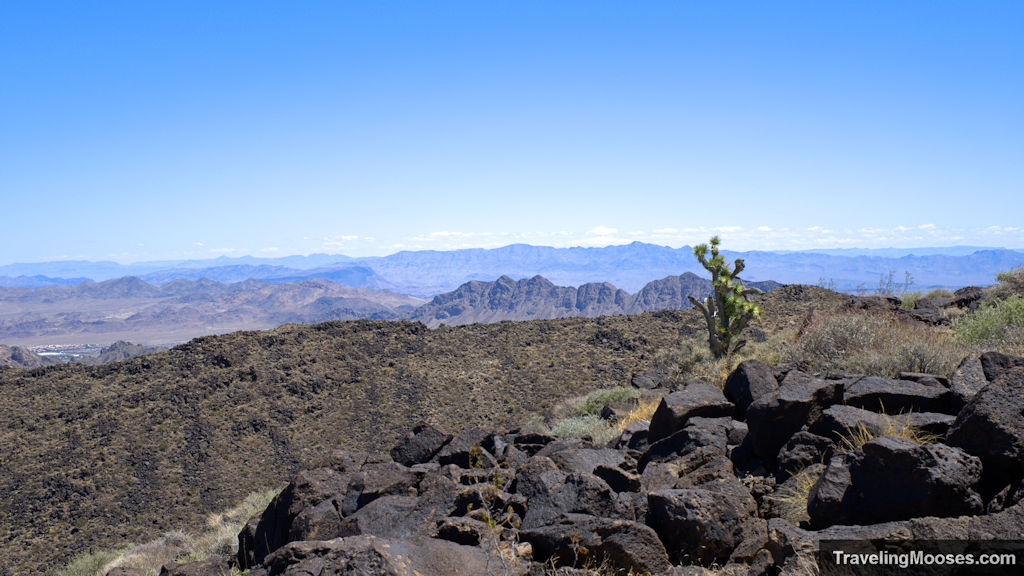Note: The following are our own thoughts and personal experiences about safety in the desert. Every situation is different and you should not rely on this information for your ultimate decision making.
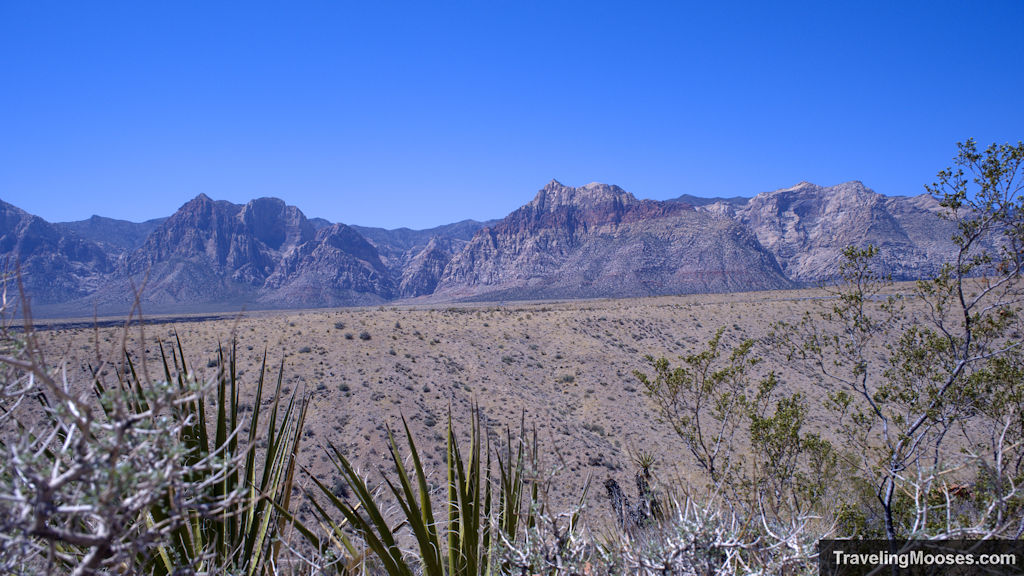
When growing up in the Pacific Northwest (PNW), except on the occasional vacation, desert hiking was mostly an afterthought. Now, after living in the heart of the Mojave Desert and exploring all it has to offer, I can say with confidence there are several non-negotiable steps we always take to keep ourselves safe in the desert.
Desert hiking tips
No one goes into the wilderness thinking something bad is going to happen. I used to think (and still do sometimes) that “it can’t happen to me” or “it’s just a 3-mile day hike, it’ll be fine.” Reality or just plain back luck can turn a typical situation into disaster where even the most prepared and skilled hikers can get in trouble quickly.
Related: Read our story of ending up off trail in the La Madre Wilderness.
When everything goes wrong
You don’t have to search far to find tales of hikers getting into trouble, especially in the hot desert.
- A local hiker makes a wrong turn on a four-mile desert trail he had been on many times before. While he had some survival gear (a compass), he didn’t have a map or GPS device and didn’t bring enough water. He barely survived. Read more here.
- Tragically lost in Joshua Tree, this hiker went for a day hike and was never seen again.
- Two hikers perished from heat exposure on a day trip outside the Las Vegas area.
- A couple’s trip to Death Valley National Park ended in disaster after their car broke down in a remote region of the desert. With limited supplies, and a subsequent injury, the ordeal left one dead. Read more here.
- In 1996 a group of boy scouts went on an overnight trip in the Grand Canyon during a heat wave. With inadequate water and an off-trail planned route, tragedy ensued. You can watch an episode of “I Shouldn’t Be Alive” A Walk into Hell, here. A word of caution, I watched that episode many years ago and it still bothers me today.
- A local boy was bitten by a rattlesnake near the Mount Galbraith trailhead in Golden, CO and did not survive.
Tragically, there are many more stories about accidents happening in the wilderness (whether in the desert or elsewhere).
We found many of them could have been prevented by adequate preparation before heading out on the adventure. What could we do to avoid their fate?
First, we needed to understand what our risks were.

Main reasons we could be injured or die while hiking in the desert:
- Heat (heat exhaustion, heat cramps, heat stroke)
- Dehydration
- Flash floods
- Hypothermia
- Slip/falls
- Snake bites/animal encounters
- Fatigue/poor physical condition
- Insufficient clothing/equipment
Mr Moose wanted me to add in “driving to the trailhead” because statistically we’re more likely to get killed in a car accident, but this was about misfortune on the actual trail so I assumed we made it to the trailhead safe and sound.

“An ounce of prevention is worth a pound of cure.”
— Ben Franklin
Since most of our former hiking experience was in the PNW, we started with the 10 essentials and adapted them to our new desert hiking conditions.
10 Essentials for staying safe in the desert while hiking
What are the 10 essentials?
- Navigation equipment (map and compass/GPS device)
- Water (and a way to purify it)
- Nutrition
- Extra and appropriate clothing
- Sun protection
- Fire source
- Illumination
- First Aid Kit
- Repair kit (knife or multi-tool)
- Emergency shelter
Navigation including Map & Compass/GPS device
After getting off track in the La Madre Wilderness, we knew the first thing we needed to do was to fix our navigation issues. Here’s what we learned and what we use now.
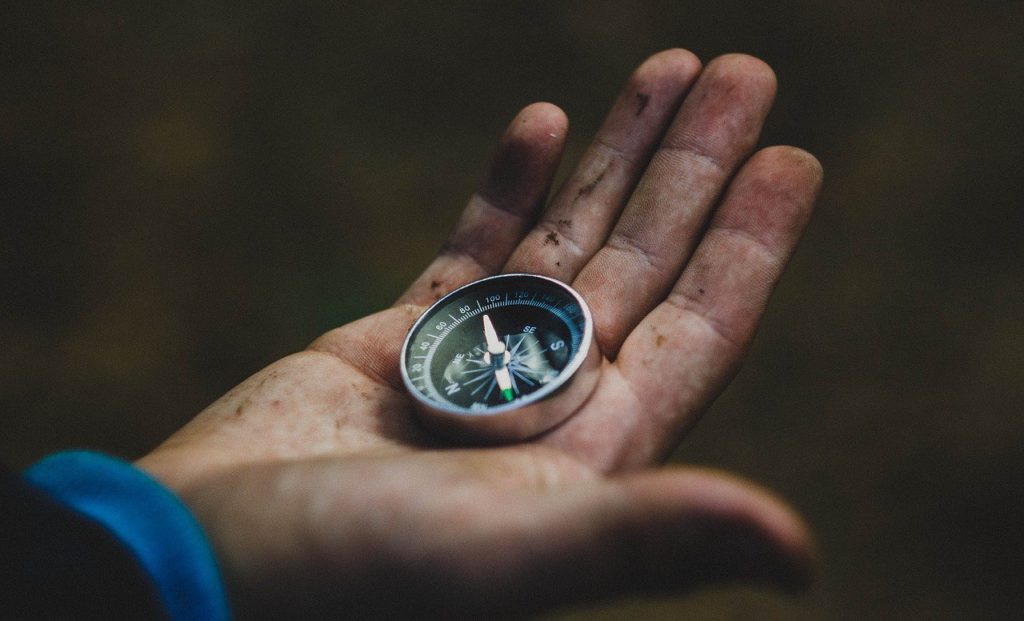
Map & Compass
Knowing how to read a map and compass is an important skill everyone who ventures in the wilderness should know. But it’s not enough to understand how to read the map, we also needed to make the effort to bring it with us. REI has a great resource on how to use a compass here, and how to read a Topo map here. The best way to learn to use the equipment is to take an in-person safety class.
GPS device
There’s a hot debate on what the best GPS device is for those that like to wander. For this discussion, we aren’t going to include our phone as it often isn’t reliable. Each has its pros and cons and some hardcore hikers end up carrying multiple devices. It’s far too much information to provide an in-depth comparison in this article, but a good resource to learn the basics can be found here. Included below are some high-level differences that were important to us when we selected a GPS device.
In general, there are two main types of GPS devices. A PLB (Personal Locator Beacon) and a satellite messenger.
Personal Locator Beacon (PLB)
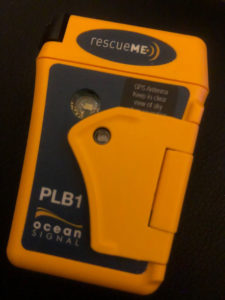
| Pros | Cons |
| Works in remote areas in a largely worldwide network | No ability to send messages or regular updates to loved ones |
| Multi-year battery | No ability to cancel the SOS once it’s activated |
| No subscription fees | Battery can’t be replaced without sending to the manufacturer |
| Stronger signal and utilization of COSPAS-SARSAT program (alerts are received by Mission Control Center and routed to appropriate Rescue Coordination center which is operated by the US Coast Guard). Read more here. That’s right, the military will be informed you are in distress! | PLBs must be registered before use (it’s free) and must be updated every two years. Note: We found the registration process to be easy |
Satellite messenger
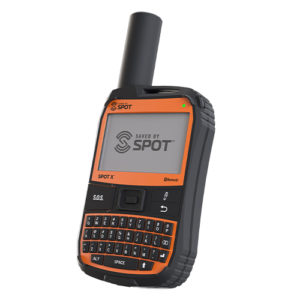
| Pros | Cons |
| Generally, works worldwide (coverage varies by brand) | Requires a subscription which can be pricey |
| Can send and receive messages from loved ones | Unobstructed sky is needed to ensure a good signal |
| Some brands allow for texting with rescuers | Battery life is limited if you’re on a long back-packing trip in a remote area |
| The batteries are rechargeable | Some models can be larger and heavier than PLBs |
Special considerations for GPS devices in the desert
For the most part, GPS devices should work very well in the desert due to the wide-open terrain and clear access to the sky. There are some exceptions if you’re exploring slot canyons which may have a more obstructed view. Exploring a cave, mine (not recommended), or just being in your car can have an impact on the satellite having a clear signal.
Using your phone as a GPS device
I’ll admit, we rely heavily on our phone for GPS maps when we’re out hiking. We really enjoy using Alltrails for our local hikes and have found it pretty reliable. If you buy the full version, you will generally be able to use its GPS abilities offline, or where there is no cell service. Alltrails does have sales sometimes on their subscription fees, so keep an eye out! Otherwise, you are at the whim of whether or not you can get cell service.
While cell coverage is getting better all the time, the reality is that you cannot rely on your phone to save you. Even hiking in Red Rock Canyon with the nearest houses only miles away, we often can’t get cell service in the hills. Battery life for cell phones can also be a challenge. If you’re anything like me and have a dozens of browsers and multiple battery hogging apps open while you’re also using your phone to snap pictures…well the battery isn’t going to last long.
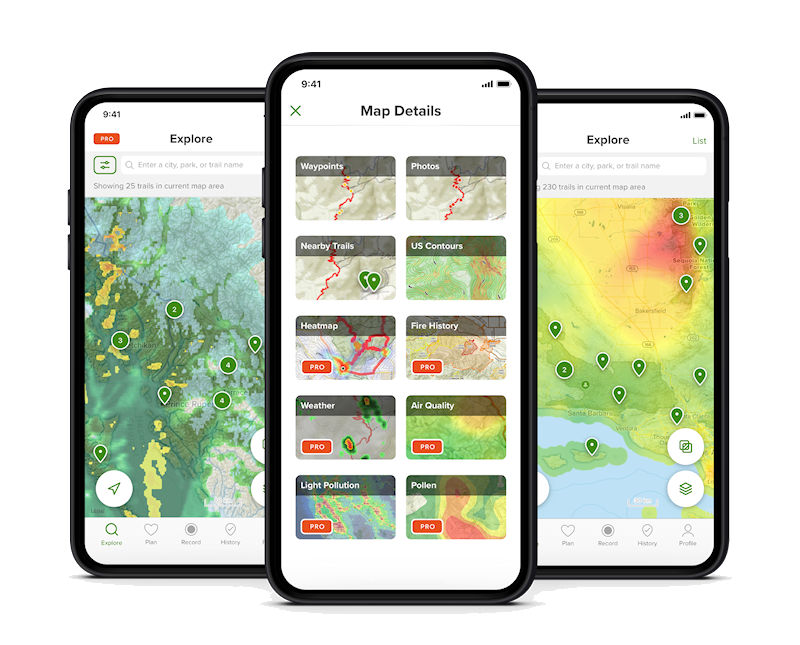
If you’re going to use your cell phone for something like Alltrails, here’s a few tips I’ve found to help my battery last:
- If you have the full version, download the offline trail map and put your phone in airplane mode to conserve the battery
- If you need to keep your phone on, make sure you close all the apps & browsers or utilize “low battery mode” to keep the apps from refreshing in the background
- Consider carrying a portable battery charger as a spare to charge your device
I’ll say it again and cannot stress this enough, do NOT rely on your cell phone to get you out of trouble. It’s great for casual use, but cannot be relied upon.
Special considerations for desert navigation
Since the desert is often featureless with few landmarks to help locate where you are, there are a couple tricks you might be able to use to help you navigate if everything else fails.
Navigating the desert during the day
If you know the prevailing winds in the area you can examine erosion in rocks or the shape of sand dunes to help determine which direction is NESW. This requires knowledge of the local area and research before you go to see what the wind patterns are. It’s not a full proof way of getting you to safety, but it’s an option if you have nothing else.
Windfinder has live wind forecasts across the globe.

Navigating the desert during the night
The best way to navigate at night is to utilize the stars for guidance (provided there is no cloud cover). The good news is the skies are often clear in the desert. Here’s a resource to get you started on how to use the stars for navigation.
What do we use for navigation safety in the desert?
We each carry a Personal Locator Beacon for emergencies and use our cell phone as a GPS device (with the full version of Alltrails) for the general hiking route. Because you can get separated when hiking, or worse wander off briefly and get injured, it is always best to have each member of your party to carry their own GPS device.
Our preferred model is the RescueME PLB1 by Ocean Signal. We haven’t had to use it yet (thank goodness), but it is lightweight, has a 7-year battery, and had good reviews online.
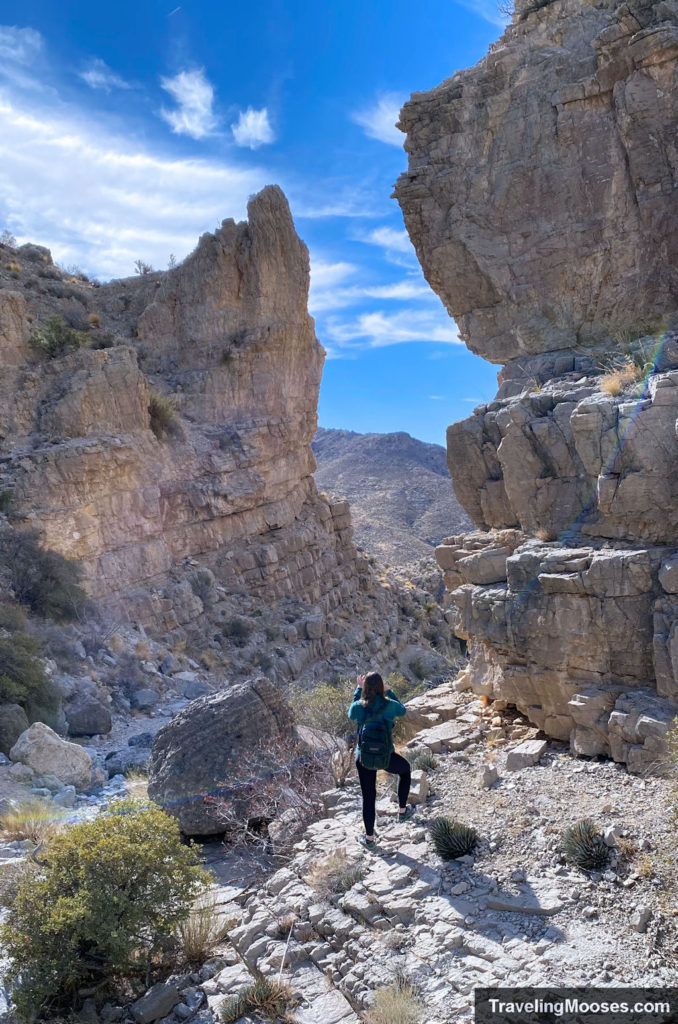
Why did we go with the PLB over the Satellite Messenger?
We went with the PLB over the Satellite Messenger because we are mostly day hikers and rarely go on overnight trips. We didn’t feel the need to communicate with loved ones back home while on the trail and only wanted to use the PLB in the worst-case scenarios. We also wanted a longer lasting battery and to avoid subscription fees. While we don’t carry both, some hikers do carry both a satellite messenger for communication and a PLB.
Other precautions we take for route planning
As an extra layer of security, you should always provide your travel plans including itinerary and check-in times to someone back home. Keep in mind that once you provide an itinerary, you should stick to it. There are far too many stories of people changing their plans at the last minute and searchers are looking in the wrong place.
Water (and a way to purify it)
The desert can be unforgiving. Water is sparse and temperatures can soar in the day and plummet at night. One of, if not the most important safety tips for the desert is to stay properly hydrated. While we all know that water is important, it is amazing how many times hikers opt to forgo taking adequate water with them on the trail due to concerns about weight and/or general laziness. We have been guilty of that in the past as well.
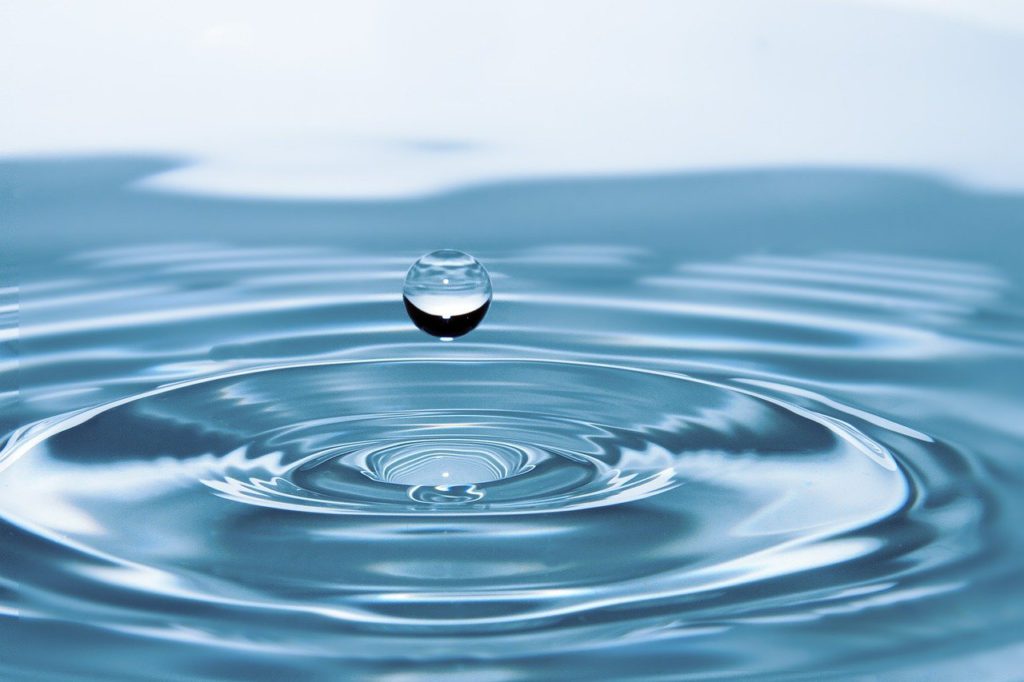
How much water do you need for a desert hike?
If you’ve ever researched how much water you need per day, you’ll find all kinds of conflicting information online. For me, I believe this is because every person is different in their needs and the environment we find ourselves in can be vastly different. I still wanted a benchmark of “what good looks like” and found what I believe to be a reliable source.
According to the US Army Survival manual (published in 2002), a person performing hard work in the sun at 109 degrees requires 5 gallons (19 liters) of water per day. The higher the temperature and the greater the effort, the more water is required to stay hydrated.
The survival guide goes on to recommend that for temperatures above 100 degrees Fahrenheit, to drink 1.0 liters of water every hour to avoid dehydration. For temperatures below 100, 0.5 liters is generally adequate.
While this is a general guide, the amount of water needed by a typical person can vary greatly based on an individual’s current level of dehydration, the circumstances they find themselves (ie temperature, exertion, availability of shade, etc), and other individual characteristics. You should always take care to listen to your body, watch for signs of heat exhaustion, heat stroke or electrolyte imbalances both for yourself and others.
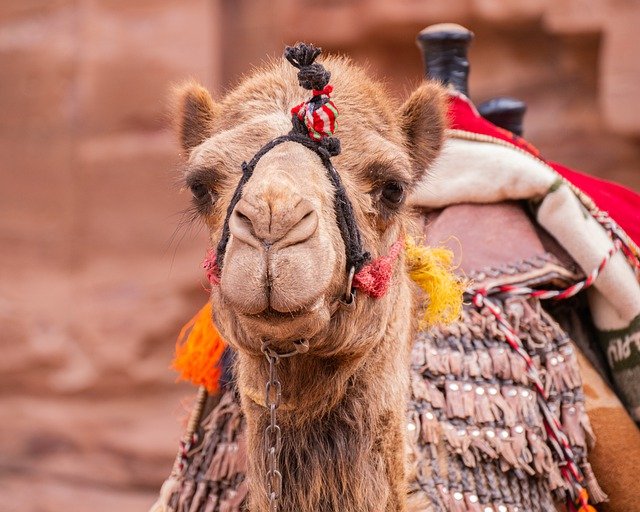
The dangers of not getting enough electrolytes
With a need for a large amount of water in the desert it is extremely important you also maintain an appropriate electrolyte balance in your body. Our bodies need to replenish sodium and potassium that we lose when sweating. Too much water can kill you if you don’t balance it out with electrolyte replacements. I’m not qualified to recommend how many electrolytes you need, but I found a resource below that helped me understand it better.
Learn more about electrolytes here.
Water we pack with us
For hot summer months and temperatures 90 or above, we bring 1.0 liter per person for each hour we think we’ll be gone. We may not drink it all but at least we have it if something goes wrong. We typically plan on a 2-mph pace (accounting for rough terrain, getting off-track and relaxation along the trail). For an 8-mile hike, we would expect to be outdoors for approximately 4 hours (more if there is elevation gain involved). That means 1 gallon of water per person. We also bring a spray bottle with cold water for misting and utilize ice packs in a pinch if things get really hot to lower our core body temperature.
Now bringing that much water on a warm hike is not always practical due to the weight and size (8.34lbs per gallon), so we normally stay home when the temperatures rise above 85. Nothing like an umbrella drink by the pool.

In addition to the water we bring in our day pack, we also keep water in our car. This doubles as extra water if we miscalculated on our hike for the drive home, and also a backup in case our car breaks down somewhere remote.
Why do we take such precautions?
I have an extremely low tolerance for sun and heat. I need more water than Mr Moose as I get dehydrated quickly and suffer from heated related issues. We’ve learned in high heat scenarios that I need to rest in the shade, keep down my core body temperature and drink more water than I thought possible. Utilizing the spray bottle with ice water and keeping ice packs with us has been critical on several hikes to keep my temperature down. This is another we reason we pay close attention to the forecast and stay home when the temperatures get too hot.
Our best tips for water safety in the desert:
- Ensure you are well hydrated before going out hiking in the desert
- Bring at least 0.5 liters per person per hour hiked in temperatures under 100 degrees F and 1.0 liters per person per hour hiked in temperatures above 100 degrees F
- Bring a method to purify water you may find in the wild (ie water purification tablets)
- Drink some water at least once an hour
- Rest in the shade when possible
- Ensure you have adequate electrolytes
Nutrition
Packing snacks and food on a hike has always been a fun activity. I might just use it as an excuse to have a yummy treat! Calories don’t count when you’re hiking right? Right?
When hiking in the desert, it is extremely important to make the right food choices for the conditions you’re going to be in.
Special considerations for food choices while hiking in the desert
The need for electrolytes
Given the importance of electrolyte replacement, we have found it beneficial to have lots of salty snacks on hand. Some examples would be salted nuts, Pringles (my favorite), and beef jerky. Trail mix is also an option, but be aware of mixes that include chocolate pieces. They turn into a gooey mess unless you’re able to keep them cold. Salty snacks are usually easy to digest, provide quick energy, and are lightweight to carry.
Foods with water in them
Many hikers like to take food that have natural sources of water in them to supplement their water intake. Items such as cherry tomatoes, oranges, strawberries (my favorite) or even celery make for a good snack when hiking in the desert.

Whatever snacks you choose, keep these general tips in mind:
- Stick to foods you are familiar with and know your body can handle. It is no time to be trying out new types of food that might not agree with you
- Make sure you have adequate amounts of food for the trip you’ve planned and bring a variety of foods to keep you motivated on the trail
Some of our favorite snacks include chocolate covered almonds (we keep them cold), Pringles, granola bars, and a peanut butter sandwich.
Extra and appropriate clothing
When I think of the desert, I think of an endless scorching hot landscape. Rain and freezing temperatures don’t come to mind, yet these are occasionally realities in the desert.
Special considerations for clothing in the desert
Dressing appropriately in the desert can be challenging given the wide variety of terrain and conditions you can encounter.
Based on our experience, there are four main categories of things to consider:
- Sun/heat
- Rain/flash floods
- Freezing temperatures (including ice/snow for higher elevation deserts)
- Wind
We’ve tailored our clothing options around minimizing exposure to those categories.
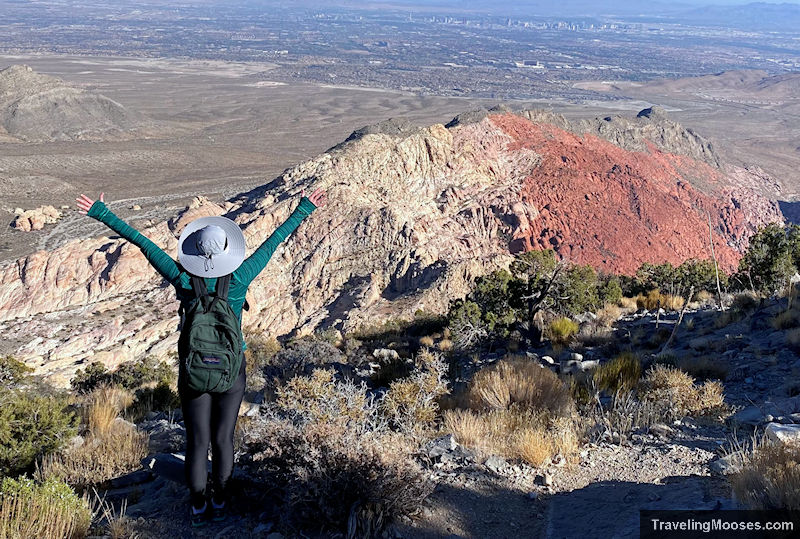
Appropriate clothing in the desert
1. Protection from the sun
We start with a hat to protect our head, face & neck. A good option is a wide brimmed hat or hat with a nape cape. We keep a long sleeve shirt that is light weight and a light color to reflect the sun in our pack. Finally, long pants provide wonderful protection from the sun. Zip off pants work great to switch between early morning hikes and later in the afternoon when the sun gets higher in the sky.
One other thing to consider is that during daylight, temperatures of desert sand and rock are usually 30 to 40 degrees higher than the temperature in the air. Be mindful before sitting down on the rocks to relax when it’s hot outside.
2. Protection from the wind/rain
We carry a lightweight rain jacket that doubles as a windbreaker when the winds pick up.
3. Protection from freezing temperatures
We plan our hikes to avoid freezing temperatures in the desert. However, we still carry a lightweight jacket or sweatshirt for warmth.
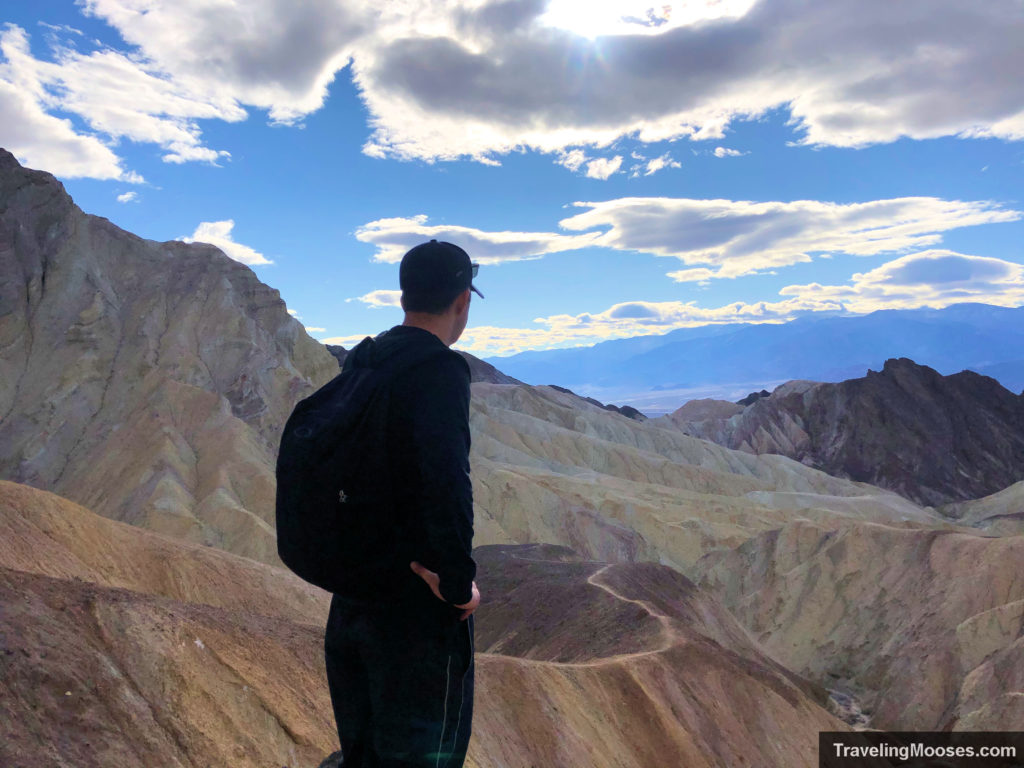
Tips for picking the best desert hiking clothing:
- Select lighter colors to reflect the sun (white, beige and yellow are good options)
- Keep a bandana or buff with you to keep desert sand out of your face when windy
- Choose a convertible pant to maintain flexibility when the weather conditions change
- Avoid cotton and choose alternative fabrics such as nylon or polyester
- Keep a jacket for cooler temperatures
Appropriate footwear in the desert
Choosing appropriate footwear for your wilderness adventures can be hard enough without adding in an additional layer of complexity, the desert.
Desert landscape varies widely from soft-deep sand and rugged rock to salt grass meadows and loose scree. You may also get caught out in a flash flood or thunderstorm. It’s important to choose your footwear carefully.

1. Keeping out sand
Hiking shoes come in many different shapes and sizes. A good choice for hiking in the desert is a mid-cut boot. Tall enough to keep out most sand, but lighter and cooler than high-cut alternatives. Unless you’re opting for a longer overnight trip with a heavy backpack, keeping things lighter weight can be a huge benefit when walking in sand.
2. Snakes in the desert
If you’re creeped out by snakes (like I am), I recommend staying away from this website that has pictures of all the snakes you can find in the desert. In the beautiful state of Nevada that we now call home, there are several venomous snakes in the area. The Mojave Rattlesnake, the Desert Sidewinder, the Western Diamondback Rattlesnake, the Speckled Rattlesnake, and the Great Basin Rattlesnake. While rattlesnakes are typically not aggressive animals, they will defend themselves and won’t hold back if they feel threatened.

The good news is the odds of coming across a venomous snake are low. As an example, the Texas Department of State Health Services released some data on various causes of death for outdoor activities in their state. Between 1978 and 2001, on average there was one death from a rattlesnake each year. There were also 3,689 deaths from car accidents. Of note, drowning, lightning and a venomous arthropod (ie scorpions, spiders etc) were also more likely to kill you than a snake. Guess Mr Moose is right about that car ride to the trailhead.
You can read more about the study here.
While rare, if you’re worried about snake bites, Amazon has a wide variety of footwear designed to protect against snake bites.
We’ve opted to forgo special snake shoes and employ these other tactics to keep us safe:
- Look before sitting on the ground or putting our hands on rocks. In addition to getting bites on your legs/feet, hand bites from rattlesnakes also occur
- Use popular trails which tend to keep rattlesnakes away
- Don’t approach any snake that is seen
- Be on alert for the sound of a rattle, but be aware that startled snakes don’t always have time to rattle before biting
Healthline put out a good resource on what to do if you’re bit by a snake.
3. Rain and flash floods
It does rain in the desert and conditions can change quickly. If you’ve ever seen those large storm drains in neighborhoods that you could probably fit in if you tried, these areas are subject to intense flash floods.
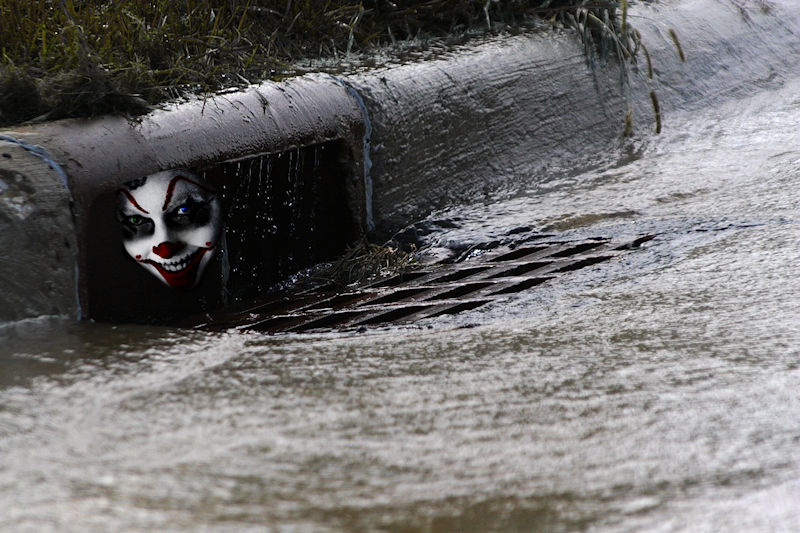
Make sure your desert hiking shoes are water-proof and have good grippy soles on the bottom. Grippy shoes are also key when walking on the many sandstone formations that are typically found in the desert. Beware that sandstone can get very slick in the rain and it’s best to stay away from those areas when it’s wet.
What to do in the event of a flash flood
- Get to high ground as quickly as possible
- Do not walk through the flowing water
- Do not take the time to try and save your possessions, they are replaceable, you are not
- If you’re able to get to higher ground, settle in and be prepared to wait as flash floods can sometimes take hours to recede
- If you can’t get to high ground, look for a place to hide behind or something to wedge yourself in
- If someone yells flash flood or screams to get out, don’t wait, get out immediately
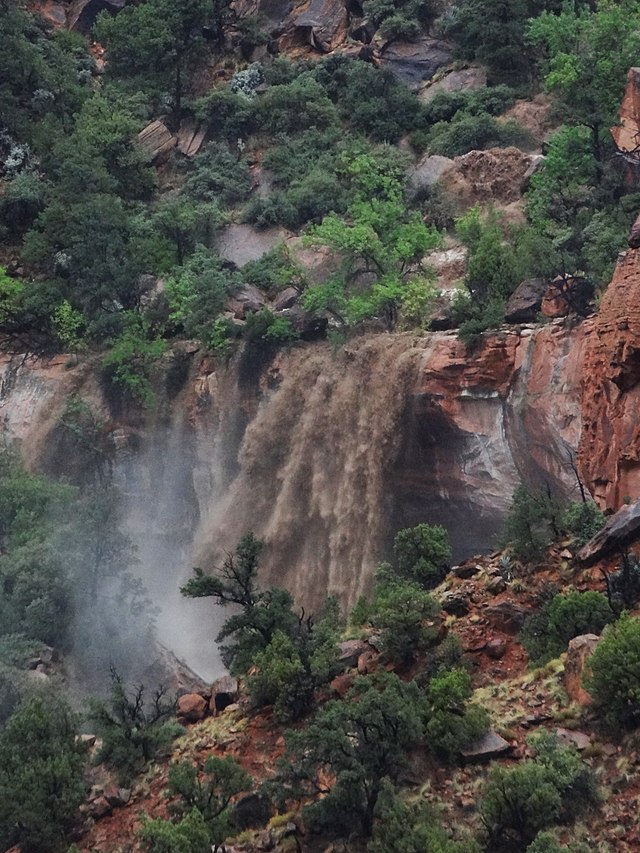
If you’d like to see how quickly a flash flood can happen, check out the hike we did to Ice Box Canyon. While we were lucky enough to have perfect conditions the day we were there, we later learned a flash flood happened in the exact spot we were standing.
Tips for picking the best desert footwear:
- Look for something breathable, tall enough to keep sand out, but lightweight enough not to get bogged down
- Ensure the soles are grippy
- Consider what type of desert terrain you’re likely to come across in your travels
- Try boots on at the end of the day when your feet are at their largest as feet tend to swell on the trail
- Wear the socks you’re planning on wearing when trying them on
- If you’re buying online, get a brand you’re already familiar with or a really good return policy
Sun protection
In the US, the average number of sunny days in the desert is 205. In Vegas, where we live, it’s 294. That means 81% of the days we leave the house, we need to protect ourselves from the sun.
Other than appropriate clothing consisting of protection for your head/neck, a long sleeve shirt, and long pants, it’s also important to carry adequate sunscreen and sunglass to protect your eyes.
Shade can also provide protection from the sun, but unfortunately in the desert you’re not likely to find much. I guess you could get one of these umbrella hats. ¯\_(ツ)_/¯
Fire source
Having a way to create a fire in the desert is extremely helpful if you get stuck outside when the temperatures drop. A lighter or preferably waterproof matches work well.

Special considerations for the desert
In many places in the desert, the amount of shrubbery and vegetation can be limited. You may be able to find dried up cactus, salt grass or other flammable materials. Use caution when picking up cactus (even dead), as glochids or other cactus needles may be still be clinging to the surface. Ouch!
Illumination
Light source in the desert
Having a light source is critical if you get stuck out past dusk or worst-case scenario, all-night. Yes, you can use your cell phone flashlight in a pinch, but I know my battery would be near dead from using it for GPS, photos, or checking sports scores earlier in the day.
We prefer to keep a headlamp with extra batteries on hand. It makes it easy to hike out when we have our hands free.
First Aid Kit
It should go without saying that a first aid kit is a must when hiking. The standard kit should always include things like bandages, cleansing pads, topical antibiotics, pain relivers, moleskin etc. There are great kits you can buy-online that include many of the standard items you may need.
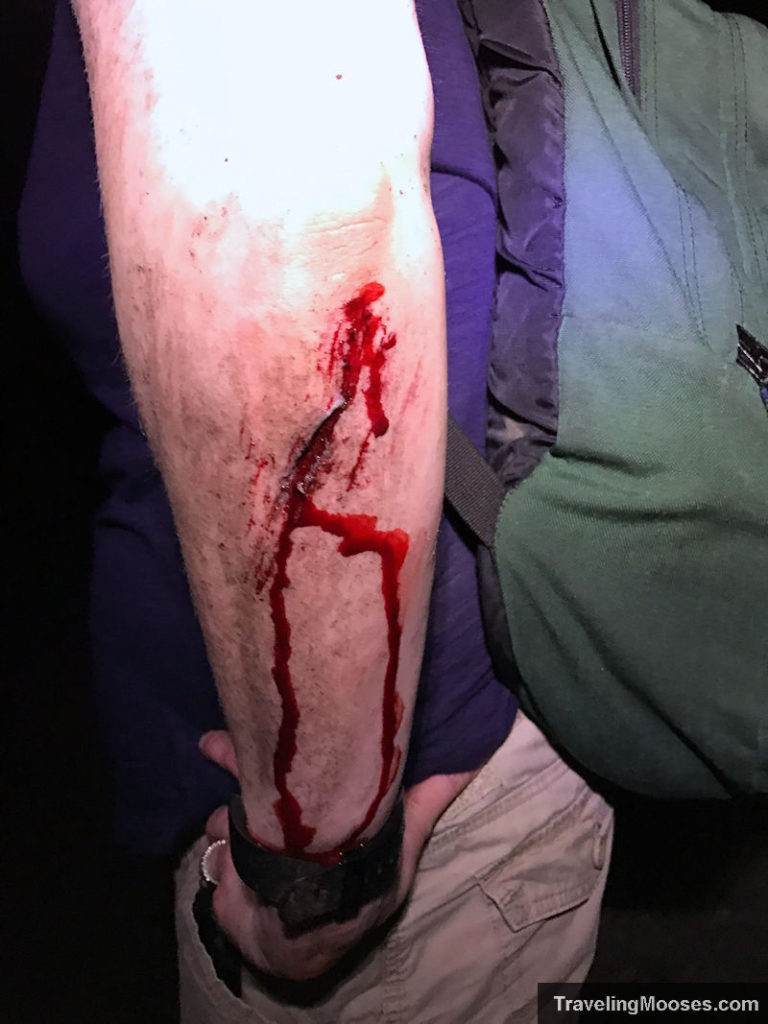
Special considerations for the desert
For the desert let’s look at some specific items we have in our kit and others that may be unnecessary:
- Aloe vera – this is great item when we’re exposed to excessive sun. It soothes and offers relief for minor burns we may get.
- Ice packs – while many first aid kits include ice packs you can activate, for desert hiking, this is a must for us. It helps us cool down when we experience heat issues.
- Snakebite kits – there are many commercial snakebite kits available and we do not recommend purchasing one. Read more about why and what we will do instead.
Repair kit (including knife or multi-tool)
Having a knife or multi-tool in your pack can come in handy for many things while out in the wilderness. The desert is no different.
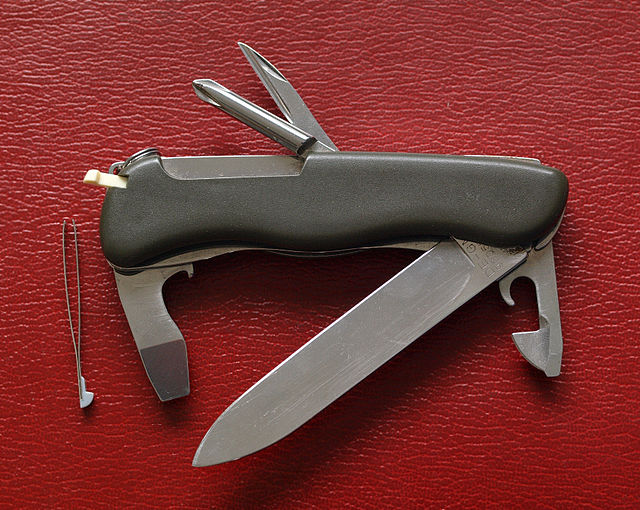
While typical uses of a multi-tool for things like opening food packs or cutting moleskin for blisters are pretty universal, one thing that it’s especially helpful for in the desert is to pull cactus needles or glochids out of your skin. If you’ve ever had glochids in your skin, you know what a pain they are to get out. On a side note, these gloves work well for working with glochids. They aren’t full proof, but they are the best we’ve found.
Other items to consider including in your repair kit are safety pins, sewing repair-kit, and duct tape. Extra batteries, nylon cord and zip ties can also come in handy.
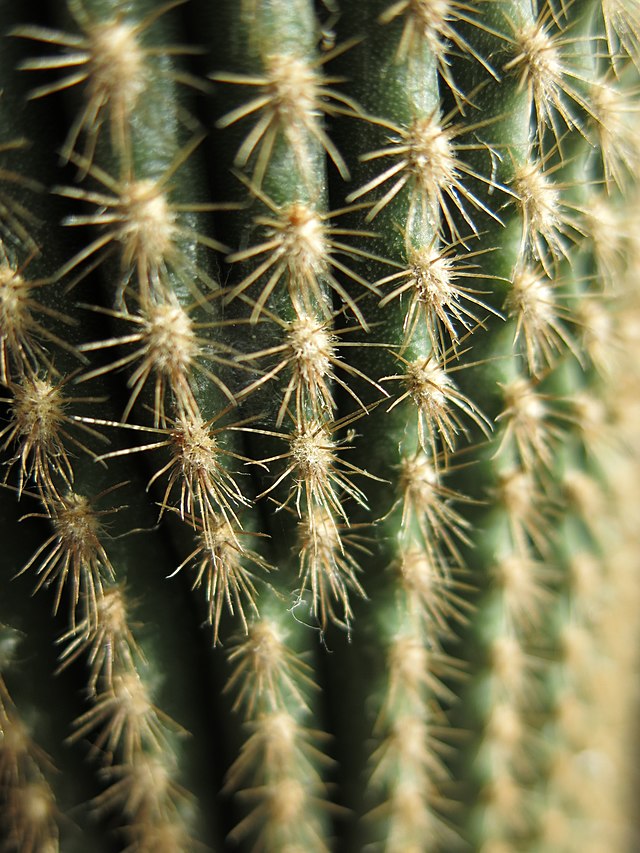
Shelter
Shelter is a critical part of safety when in the wild. We’ve been lucky in that we’ve never had to create shelter in the desert on our hikes. If we’re ever faced with it, we plan on solving for two major issues, creating shade in the day and warmth at night.
Creating shade
In our desert travels, shade has been pretty non-existent. We’ve found some by large Joshua trees, rock formations or slot canyons, but for the most part it’s just empty barren land.
One strategy is to bring a lightweight tarp to block out the light propped up by a hiking pole or other natural land feature. Some experts recommend digging a hole in the ground and getting inside, but we don’t carry a shovel and I always have horrible images of people digging holes in the sand and having it collapse. We’ll stick with the tarp.
Creating warmth
For a day hike, we like to bring an emergency space blanket for shelter. It is small, lightweight and fits effortlessly into our pack. You can buy a fold up blanket that fits in the palm of your hand and weighs 2 ounces for a couple of dollars. I’ve had to use one of the blankets once and it was a life saver!
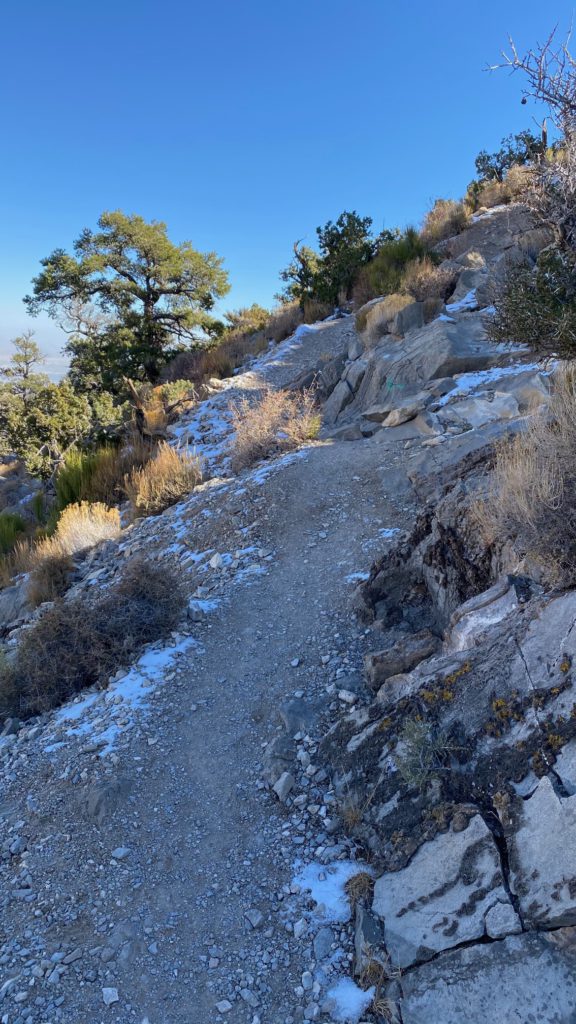
What is in our desert hiking pack
We’ve covered a lot of information and while we are by no means experts, we have failed at bringing the 10 essentials in the past. Learn from our mistakes and be prepared for the worst.
Before:
- Some water & snacks
- Camera
- Maybe a sweatshirt
- Sunglasses
- Rough idea of where we were going
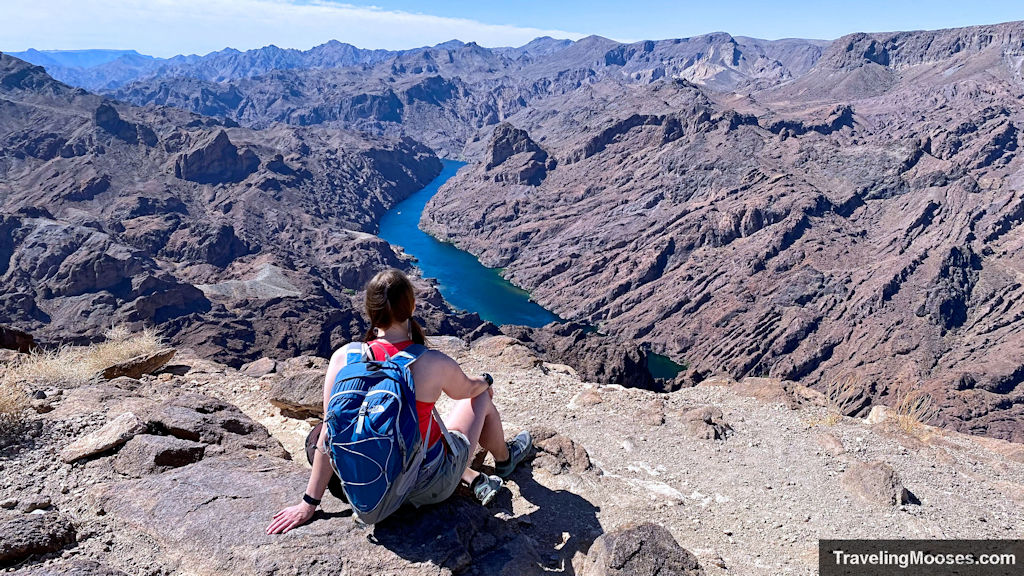
After we learned what we really needed we try to always have the following with us:
For safety gear:
- RescueMe PLB1
- Adequate water for our intended trip plus extra water in the car
- Adequate snacks for the hike plus a few extra granola bars
- A sweatshirt and light rain jacket for extra layers
- Waterproof matches
- A headlamp
- First aid kit including aloe vera and ice packs
- A multi-tool and extra batteries
- Sunscreen, a hat and appropriate clothing
- An emergency blanket
For non-safety gear:
- Iphone for GPS with Alltrails
- Camera
- Travel Tripod
- Binoculars
- Bug spray
Other safety tips we use to keep safe in the desert
Having the 10 desert essentials for hiking in the desert is a huge step in the right direction to keeping us safe and sound. There are a few other best practices we always employ before leaving the house:
- Leaving our itinerary with a loved one including an agreed upon check-in time
- Thoroughly researching the area we’re going to including reading reviews of the area from other travelers
- Checking the weather forecast both the night before and the morning of. This includes checking for flash flood warnings, other forecasted storms and potential heat waves
- Going through our hiking checklist to ensure we have everything we meant to bring
- Knowing our limits and when to turn around if things go wrong
- Ensure we have the proper permits and/or registration completed for certain areas
- Avoid hiking during high temperatures
Be safe and have fun out there!
You might also enjoy:
- Nevada: 4 Hours in the Valley of Fire
- Nevada: A Nature lovers guide to Vegas – what not to miss
- California: Surviving Badwater Basin in Death Valley
- California: Hiking Gower Gulch in Death Valley

